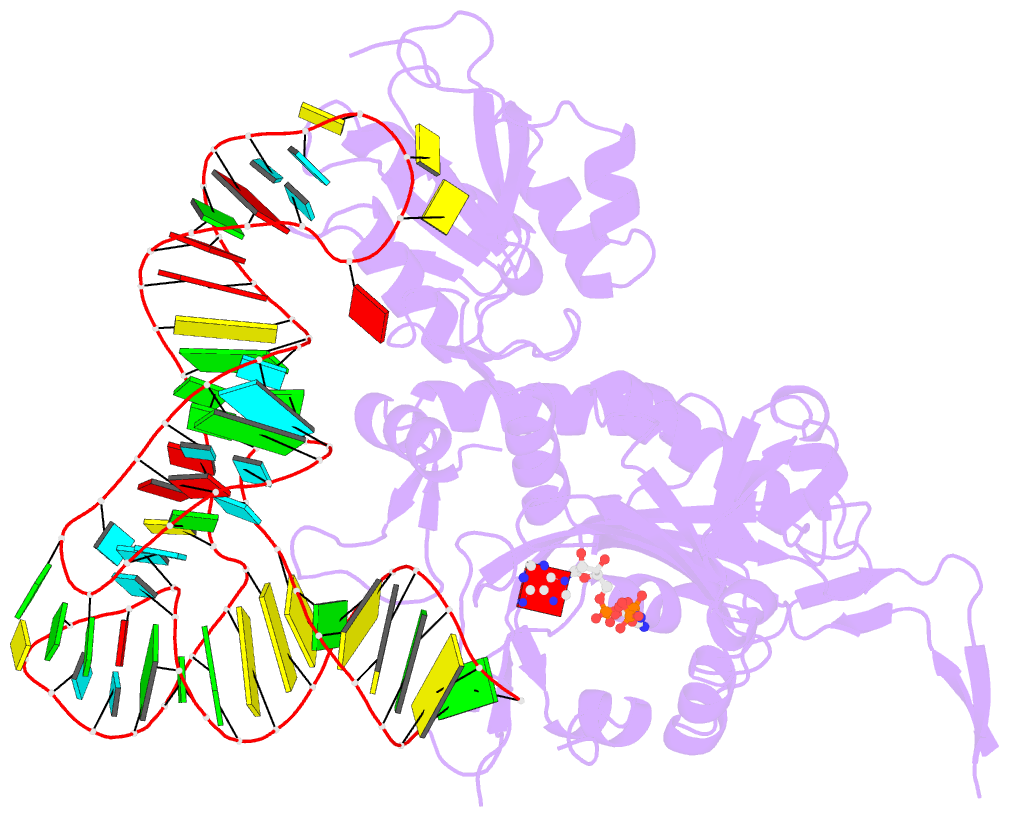Summary information and primary citation
- PDB-id
- 4kr3; SNAP-derived features in text and JSON formats;
DNAproDB
- Class
- ligase-RNA
- Method
- X-ray (3.235 Å)
- Summary
- Glycyl-trna synthetase mutant e71g in complex with trna-gly
- Reference
- Qin X, Hao Z, Tian Q, Zhang Z, Zhou C, Xie W (2014): "Cocrystal Structures of Glycyl-tRNA Synthetase in Complex with tRNA Suggest Multiple Conformational States in Glycylation." J.Biol.Chem., 289, 20359-20369. doi: 10.1074/jbc.M114.557249.
- Abstract
- Aminoacyl-tRNA synthetases are an ancient enzyme family that specifically charges tRNA molecules with cognate amino acids for protein synthesis. Glycyl-tRNA synthetase (GlyRS) is one of the most intriguing aminoacyl-tRNA synthetases due to its divergent quaternary structure and abnormal charging properties. In the past decade, mutations of human GlyRS (hGlyRS) were also found to be associated with Charcot-Marie-Tooth disease. However, the mechanisms of traditional and alternative functions of hGlyRS are poorly understood due to a lack of studies at the molecular basis. In this study we report crystal structures of wild type and mutant hGlyRS in complex with tRNA and with small substrates and describe the molecular details of enzymatic recognition of the key tRNA identity elements in the acceptor stem and the anticodon loop. The cocrystal structures suggest that insertions 1 and 3 work together with the active site in a cooperative manner to facilitate efficient substrate binding. Both the enzyme and tRNA molecules undergo significant conformational changes during glycylation. A working model of multiple conformations for hGlyRS catalysis is proposed based on the crystallographic and biochemical studies. This study provides insights into the catalytic pathway of hGlyRS and may also contribute to our understanding of Charcot-Marie-Tooth disease.





